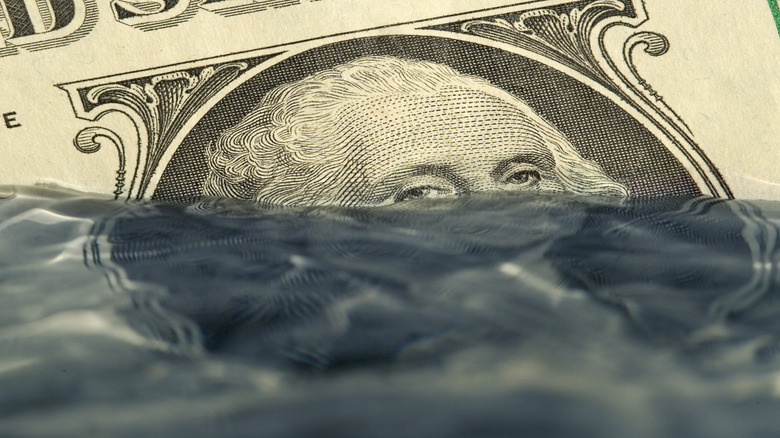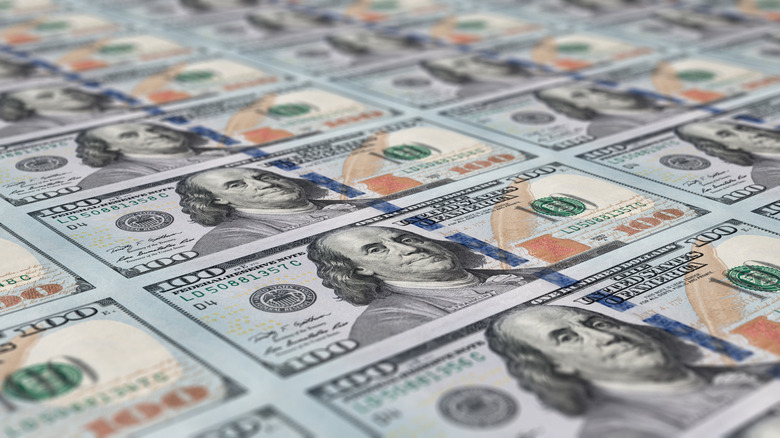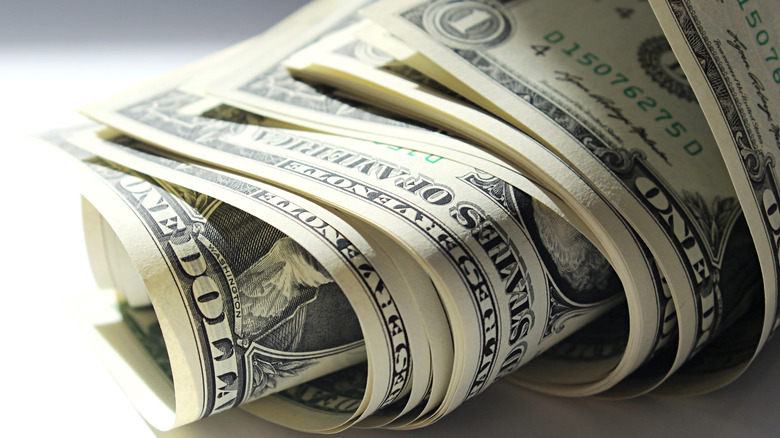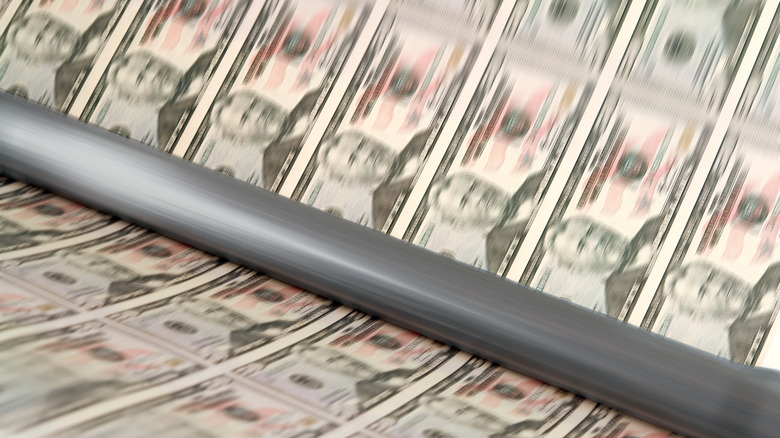How Much Does It Cost The Government To Make A Dollar Bill?
The federal government prints a huge pile of cash every year. The Federal Reserve's Board of Governors reports that the order for 2025 sits somewhere between 4.1 and 5.9 billion total notes with a face value ranging between $83.2 billion and $113 billion (alterations to the print order frequently take place throughout the typical year so it's expressed as a range rather than a set figure). There's a huge logistical network of decisions and processes that play into this effort, from sourcing supplies to protecting the entire chain of custody (after all, stolen or lost stockpiles of cash is an unacceptable outcome). It might be easy to imagine an elaborate, time consuming, and costly labyrinth of decisions and actions hanging over the production of American currency.
But the reality is that printing each dollar bill is quite inexpensive. When it's all said and done, the sheer volume of bills that get printed brings the cost down to a relatively tiny figure. The Federal Reserve's Board of Governors reports that a single $1 bill costs just 3.2 cents in variable printing costs. On the other end of the consumer currency spectrum, $100 bills run about three times more, at 9.4 cents per note. As is usually the case, though, there's quite a bit more to the story than just the operational expenses involved in printing bills.
Printing costs are broken down into two general categories when exploring this question
The variable printing costs are just one piece of the equation, and the Federal Reserve actually has a separate budgetary carveout set aside for additional expenses directly relating to the printing of new currency. Variable costs account for just the raw supplies — ink, paper, labor, and other direct line item expenses to bring dollar bills into existence. The budget for 2025's new run is set at $665.5 million for fixed printing costs, including indirect manufacturing, support, research and development, and overhead. A range of added expenses indeed play a major part in developing and delivering cash to the market. Printing presses are specially designed to handle bills, for instance. This means they need to be serviced by specialists who can keep the unique mechanisms operational. There's also the cost of maintaining the buildings they're printed in, as well as paying the electricity bill and funding other essential services.
In the same way that a business of any sort has a laundry list of minor expenses that keep it running from day to day, so too does the treasury as it prepares and prints new money. The total operating budget for 2024 was $1.104 billion, with $361.9 million earmarked for variable printing costs, meaning the additional expenses to keep the operation working smoothly outpace the direct price tag levied against the actual printing process itself.
Development is a key aspect, too
The dollar bills we're familiar with today began to take shape in earnest with the Federal Reserve Act of 1913. Even before this time, however, many of the design choices and symbols that are retained in contemporary bills were largely in place, such as the unfinished pyramid and the typeface used in the minting process. Even with a largely standardized set of unique denomination bills, there's so much more than just printing that goes into the design and rollout of each year's new monetary creation. Aesthetics are obviously important, and every country, the U.S. included, looks to maintain the basic look and feel of their bills from year to year. However, there's an integrated need to make frequent changes to prevent counterfeiters from catching up. In the 1860s, it's estimated that roughly a third of all U.S. bills in circulation were counterfeit, today the problem is much smaller, but counterfeits still make up as much as $200 million with an estimated one of every 10,000 notes in circulation being forgeries.
Creating new money isn't a simple task. Designers have to draw up new ideas to work into the bills that won't really raise much attention. The average consumer won't notice most of these civil servants' work until a totally new run of bills comes out (the $100 bill was redesigned in 1996 to phase out the 1928 edition, and again in 2013, for instance). Sometimes these feature security threads. Other updates have been purely focused on the minutiae of the drawing, such as removing the borders around the subject's head or reimagining the nuanced border that runs around the perimeter.
Printing new money to add to into circulation is a calculated decision
The money supply is a fickle balancing act that goes beyond the simple cost of production. Input too much stock into the market, and inflation takes root. On the other hand, if the circulated currency becomes too scarce, it can stifle economic activity in a variety of ways. There's yet another subset of conditions that can complicate matters even farther. During the pandemic when the federal government handed out stimulus checks to Americans, many people socked that cash away in investments and savings accounts. The effect was a wash of new currency out in the wild, but plenty of that capital stayed hidden away, negating some of the early inflation pressure (that would come later, unfortunately). Indeed, when money is hoarded in large quantities rather than spent, it can have a similar effect to a buyback in which the federal reserve acts to reduce the money in circulation.
These factors mean that production costs aren't the only thing to consider when evaluating the supply of notes and coins out in the open market. Unlike goods that people purchase, an increase in the supply isn't just a simple economic calculation but rather a complex series of nuanced decisions. It might only cost a few cents to create a new $1 bill, but that doesn't mean the government is "creating" money through this printing endeavor.



